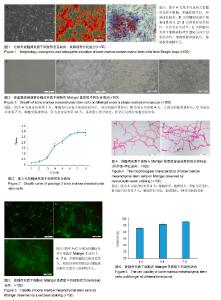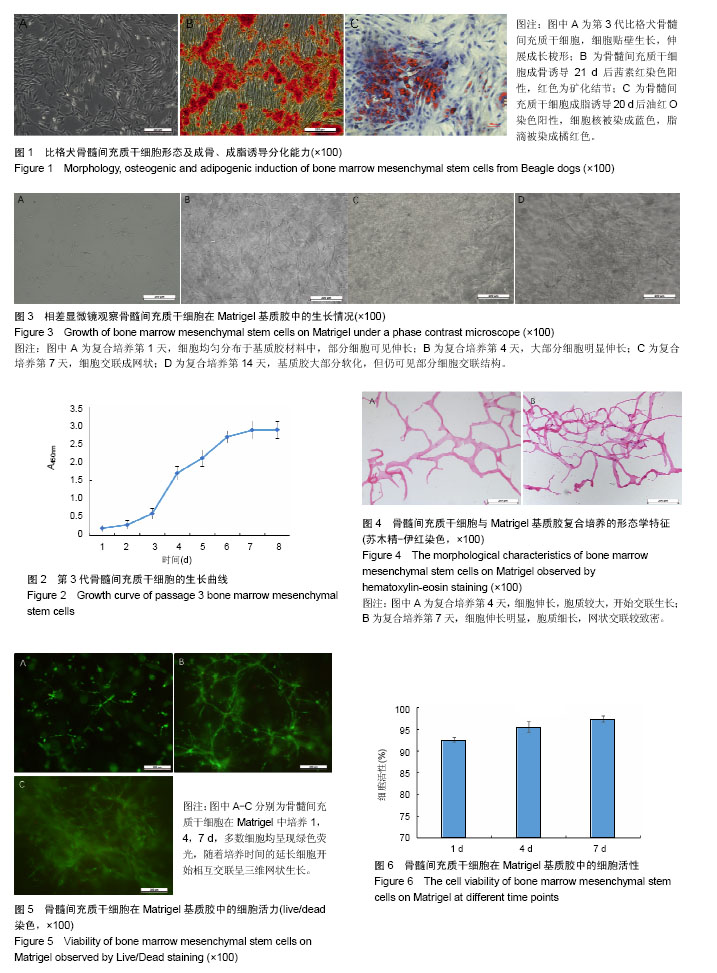| [1] Elsayed YA, Sausville EA.Selected novel anticancer treatments targeting cell signaling proteins. Oncologist. 2001;6(6):517-537.[2] Albanell J, Codony-Servat J, Rojo F, et al. Activated extracellular signal-regulated kinases: association with epidermal growth factor receptor/transforming growth factor alpha expression in head and neck squamous carcinoma and inhibition by anti-epidermal growth factor receptor treatments. Cancer Res. 2001;61(17):6500-6510.[3] 廖锋,郑扬,耿彬,等.促进移植间充质干细胞成骨的研究进展[J]. 基础医学与临床,2013,33(10):1123-1126.[4] Beyth S, Schroeder J, Liebergall M. Stem cells in bone diseases: current clinical practice. Br Med Bull. 2011;99: 199-210.[5] Barnett MDJ, Pomeroy GC.Use of Platelet-Rich Plasma and Bone Marrow-Derived Mesenchymal Stem Cells in Foot and Ankle Surgery. Techniques in Foot & Ankle Surgery. 2007; 6(6):89-94.[6] Kleinman HK, Martin GR. Matrigel: basement membrane matrix with biological activity. Semin Cancer Biol. 2005;15(5): 378-386.[7] Mondrinos MJ, Koutzaki S, Jiwanmall E, et al. Engineering three-dimensional pulmonary tissue constructs.Tissue Eng. 2006;12(4):717-728.[8] 张海峰,杜子婧,赵丹阳,等. 绿色荧光蛋白基因转染示踪比格犬体内骨髓间充质干细胞分化[J]. 国际骨科学杂志, 2016, 37(2): 117-122.[9] Zhao J, Zhang Z, Wang S, et al. Apatite-coated silk fibroin scaffolds to healing mandibular border defects in canines. Bone. 2009;45(3):517-527.[10] Campagnoli C, Roberts IA, Kumar S, et al. Identification of mesenchymal stem/progenitor cells in human first-trimester fetal blood, liver, and bone marrow. Blood. 2001;98(8): 2396-2402.[11] Lee OK, Kuo TK, Chen WM, et al. Isolation of multipotent mesenchymal stem cells from umbilical cord blood. Blood. 2004;103(5):1669-1675.[12] Jiang Y, Jahagirdar BN, Reinhardt RL, et al. Pluripotency of mesenchymal stem cells derived from adult marrow. Nature. 2002;418(6893):41-49.[13] Noël D, Gazit D, Bouquet C, et al. Short-term BMP-2 expression is sufficient for in vivo osteochondral differentiation of mesenchymal stem cells. Stem Cells. 2004;22(1):74-85.[14] Silva GV, Litovsky S, Assad JA, et al. Mesenchymal stem cells differentiate into an endothelial phenotype, enhance vascular density, and improve heart function in a canine chronic ischemia model. Circulation. 2005;111(2):150-156.[15] Gafni Y, Turgeman G, Liebergal M, et al. Stem cells as vehicles for orthopedic gene therapy. Gene Ther. 2004;11(4): 417-426.[16] Xu W, Zhang X, Qian H, et al. Mesenchymal stem cells from adult human bone marrow differentiate into a cardiomyocyte phenotype in vitro. Exp Biol Med (Maywood). 2004;229(7): 623-631.[17] Xu W, Qian H, Zhu W, et al. A novel tumor cell line cloned from mutated human embryonic bone marrow mesenchymal stem cells. Oncol Rep. 2004;12(3):501-508.[18] Neuhuber B, Swanger SA, Howard L, et al. Effects of plating density and culture time on bone marrow stromal cell characteristics. Exp Hematol. 2008;36(9):1176-1185.[19] Chen ZZ, Van Bockstaele DR, Buyssens N, et al. Stromal populations and fibrosis in human long-term bone marrow cultures. Leukemia. 1991;5(9):772-781.[20] 李晓峰,赵劲民,苏伟,等. 大鼠骨髓间充质干细胞的培养与鉴定[J].中国组织工程研究,2011,15(10):1721-1725.[21] Aggarwal S, Pittenger MF. Human mesenchymal stem cells modulate allogeneic immune cell responses. Blood. 2005; 105(4):1815-1822.[22] Brill E, Gobble R, Angeles C, et al. ZIC1 overexpression is oncogenic in liposarcoma. Cancer Res. 2010;70(17):6891-6901.[23] Kang BJ, Ryu HH, Park SS, et al. Effect of matrigel on the osteogenic potential of canine adipose tissue-derived mesenchymal stem cells. J Vet Med Sci. 2012;74(7):827-836.[24] Park SS, Lee YJ, Lee SH, et al. Functional recovery after spinal cord injury in dogs treated with a combination of Matrigel and neural-induced adipose-derived mesenchymal Stem cells. Cytotherapy. 2012;14(5):584-597.[25] Philp D, Chen SS, Fitzgerald W, et al. Complex extracellular matrices promote tissue-specific stem cell differentiation. Stem Cells. 2005;23(2):288-296.[26] Du WJ, Chi Y, Yang ZX, et al. Heterogeneity of proangiogenic features in mesenchymal stem cells derived from bone marrow, adipose tissue, umbilical cord, and placenta. Stem Cell Res Ther. 2016;7(1):163.[27] 黄旋平,周诺,江献芳,等. 人骨形态发生蛋白2基因修饰自体骨髓间充质干细胞移植促进兔下颌骨牵张成骨实验的组织形态学观察[J]. 中国组织工程研究,2012,16(23):4242-4246. |

